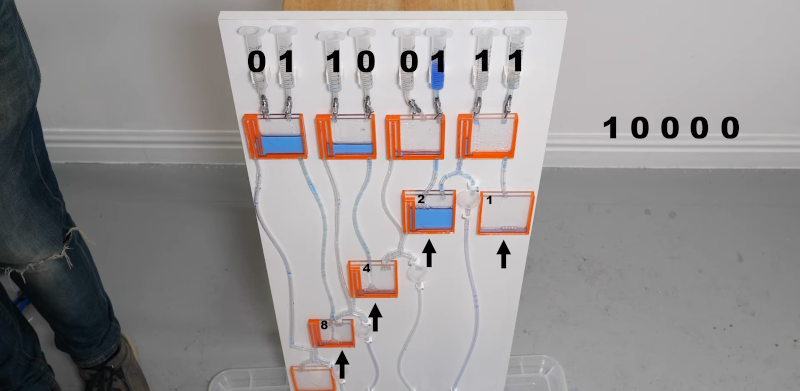
A lot of elementary electronic texts use water as an analogy for electricity. You know, pressure is voltage, flow is current, and pipe diameter is resistance. It is ironic, then, that some people use fluids to build logic gates and, in fact, you can make any logic circuit you like using nothing but water flowing through some structures. Don’t think so? Have a look at the video from [Steve Mould] below.
Fluidic logic isn’t anything new, but it has always been a bit exotic. Usually, replacing electrons with water or even air — which is a kind of fluid — means you are trying to operate in a tough environment or have some other special need. As far as we can tell, [Steve] did it just because he could, and we get that.
Historically, fluidic logic uses small pressure jets to redirect fluid flows, something the U.S. Army figured out in 1957. However, [Steve’s] take uses some cells that depend on water level and siphon action to work. He also had some impractical logic gates that were very illustrative, even if they didn’t work very well.
The first attempt fell somewhat short, but all problems were eventually resolved. Of course, adding two four-bit numbers is a far cry from a full computer, but you have to admit, it is a start. Old computers used acoustic waves in mercury for memory, so it would be an interesting pairing to build something with the complexity of, say, an EDSAC using this type of construction.
Turns out if you start looking, lots of things can form logic gates, even dominos. You have to wonder if the ancient Egyptians had the idea if they could have made a fluidic computer out of brick and powered it with the Nile? Probably no harder than the pyramids, and you can only wonder what they would have done with it.
0 Commentaires